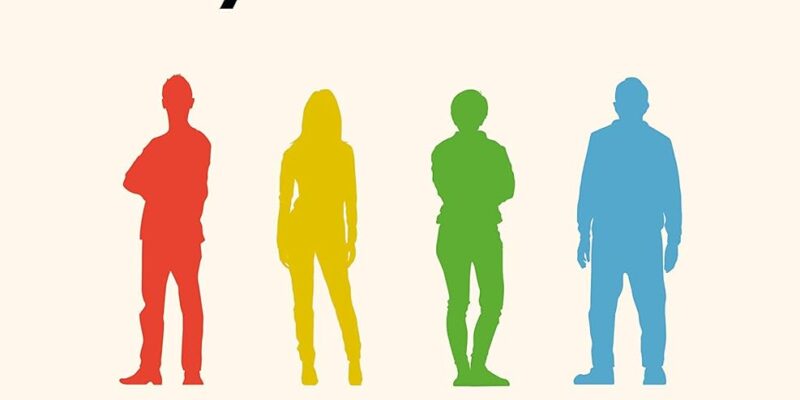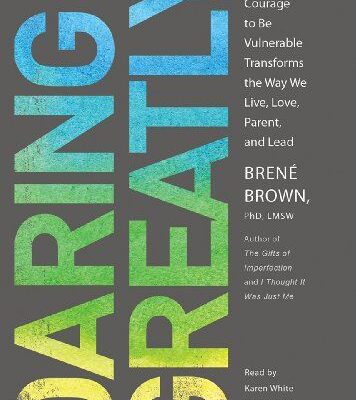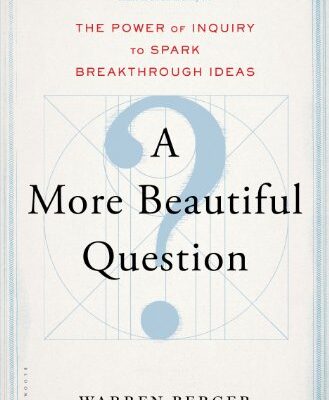Table of Contents
Surrounded by Idiots Summary
“Surrounded by Idiots” by Thomas Erikson provides a compelling exploration of human behavior and communication dynamics through the lens of personality types. The book introduces the DISC system, categorizing individuals into four color-coded personality types: Red, Yellow, Green, and Blue. Offering practical strategies for effective communication and interpersonal relationships, the author delves into tips for interacting with each personality type, understanding body language, managing stress triggers, and adapting to diverse behaviors. With valuable insights into navigating the complexities of human interaction, “Surrounded by Idiots” equips readers with tools to enhance their emotional intelligence and foster better connections in various contexts.
Surrounded by Idiots Notes
Foreword
- The feeling of people just not understanding you is common among everyone.
- There are groups of people we feel just get us and those that we feel don’t. The ones that get us tend to become our friends and the others we try to avoid
- These disparities occur due to differences in personality types
Chapter 1: Communication happens on the listener’s terms
- We can shift how we communicate with others so that we create a safe environment that suits them. They know how they want to be treated and if we can also understand that we can adjust our communication to meet their needs.
- Systems developed to “explain” human personalities and behaviors are never perfect. They cannot account for all the nuances that occur within a person. They just give a baseline from which to start
- There are two situations when we can truly be ourselves and not risk misunderstandings:
- When we are alone
- When we are with people who all think exactly like us
- As humans we naturally categorize. Categorizing others is something that we do even when we don’t mean to
Chapter 2: Why are we the way we are?
- We are influenced at a young age by our family and friends
- Influences can start in impact our core values which are central to who we are and rarely change
- Attitudes are perspectives impacted by opinions and perspectives. Over time they can change
- We modulate our behavior to fit the situations
Chapter 3: An introduction to the system
- The colors system is used by DISC to codify the values that help determine the characteristics of individuals in their behaviors
- 80% of people have two colors that dominate their behavior
- ~5% have only one color that dominate their behavior
- Everyone else is dominated by three colors
Chapter 4: Red Behavior
- Reds are driven and highly competitive
- They cannot sit idle. They have to consistently be moving on things
- They set ambitious and often un-reachable goals
- Reds often speak their minds
- They will tirelessly work on a project when others have given up
- Reds do not necessarily feel driven to win out of malice but that often can be the perception
- Reds hate inefficiency. This can come through in meetings that are doodling on instead of getting to the point.
- Reds can express their beliefs with so much belief and gusto that others will believe them as well even if they are wrong
- As culture has changed many reds have figured out how to control themselves a bit more to be more effective in changing environments and cultures. However this control usually breaks periodically
Chapter 5: Yellow Behavior
- Yellows create a sense of gravity toward themselves from others
- Yellows tend to react to “gut” instincts more than other colors
- Yellows create a sense of unrelenting positivity to those and others around them
- Yellows tend to provide answers to those around them even when questions are not asked
- Yellow are extremely social and tend to make friends wherever they are and wherever they go
- Yellows tend to be able to think in visual forms using images and can picture their ideas as they start to unfold
- This tends to help them come up with creative solutions to problems that others could not come up with
- Yellows thrive on the success of those around them and the relationships that grow from those successes
Chapter 6: Green Behavior
- Greens are representative of a balance between reds, yellows and blues
- Because of the balance green behavior tends to stick out less than the others
- Greens also make up the largest portions of the population
- Greens are very reliable. When they say they will do something they will do it in a time frame that is very reasonable
- Greens are eager to help and to avoid conflict
- Greens are introverts and avoid talking for the sake of talking
Chapter 7: Blue Behavior
- Blues are analytical and often know a lot of facts about the things that interest them or are near to their interests
- Blues do not see the fuss in a lot of credit for their ideas. They have the right answers but usually won’t bring them up unless prompted
- Blues are extremely cautious. They must make sure everything is in order and are very unlikely to take risks
- For a blue they are interested in the all of the details and the journey to a destination rather than the destination itself
- Blues will pursue the right way to do things every time
- Blues live more as logical thinkers rather than emotional ones
- Blues rarely get taken advantage of in a sale because they know all the details
Chapter 8: No One is Completely Perfect
- Because behavior and understanding is so varied there are cases where being right does not inherintly mean that the other person or persons are wrong
- Reds are notorious rule breakers to get things done or moving more quickly
- Reds feel like they know what is best and will control those around them to achieve their vision
- Reds do not want a lot of detail to things they don’t have a lot of interest in. If they ask about something they are not interested in then they just want a short and concise answer
- Red have a hard time connecting with people because emotional problems are foreign to them and they cannot understand the feelings that people have
- Yellows get interpreted as selfish, superficial and self confident
- Yellows like to dominate a conversation and tend to have opinions or ideas on every topic that might be brought up.
- The things that a yellow says may or may not be well thought out or true as they seek to entertain and inspired rather than educate
- Yellows tend to dislike being controlled by systems. Thus they are terrible at planning and organization.
- Yellows are great at starting things but lack the focus and discipline to keep them going
- Yellows are bad listeners
- Greens tend to hold on to belief that they receive from a trusted individual or source. This is a form of [[confirmation bias]]
- Greens tend to be comfortable doing nothing
- Greens feel uncomfortable being direct or committing 100% to a though or idea
- Greens dislike change and need a lot of time to warm up to it
- Greens are bad at providing feedback because they want to avoid conflict but they will provide it to others in smaller groups
- Blues tend to take a long time to start anything because they need to work out all the details before they start
- Blues have a hard time feeling like they have completed anything because there is alway something more that can be done to approach perfection
- Blues have a hard time trusting you unless they know for fact that you are a expert or very knowledgeable in your field
Chapter 9: Learning New Things
Chapter 10: Body Language: Why how you move matters
- Body language contains roughly seven hundred thousand signals according to the author
- The personal zone refers to the general space between two acquainted people who are communicating
- The social zone refers to the general space between two strangers who are communicating
- Reds
- Keep their distance from others
- Have powerful handshakes
- Lean forward aggressively
- Use direct eye contact
- Use controlling gestures
- Yellows
- Are tactile
- Are relaxed and jocular
- Show friendly eye contact
- Use expressive gestures
- Often come close
- Greens
- Are relaxed and come close
- Act methodically
- Tend to lean backwards
- Use very friendly eye contact
- Prefer small-scale gestures
- Blues
- Prefer to keep others at a distance
- Either stand or sit
- Often have closed body language
- Use direct eye contact
- Speak without gestures
Chapter 11: A real life example
- Alcohol can change the characteristics of each of the different behavior profiles
Chapter 12: Adaptation
- [[Emotional Intelligence]] can be interpreted as the ability to adapt to the different behaviors of those around you to be able to communicate with them in an effective manner
- It is possible to completely be yourself and never change to meet a situation. This does limit the number of people who you will effectively get through to
- We have to be careful in how we express this knowledge to others. If you can completely understand and individual and categorize them based on their behaviors and they know that you are doing it then some people will become uncomfortable that they can be deduced to a set of actions and behaviors
Reds
- Reds desire quick results. Speak quicker and get to the point. Don’t flourish the discussion or meetings
- Start with the point and then add the details as requested
- Reds enjoy hard work and respect it in others
- Encourage a red not to leave others in the dust when they are needed on a project. Give the red examples of how others can contribute. Remind them that they can’t do it on their own
- Confront a red when they are being belligerent and remind them that you will not tolerate that kind of behavior
Yellows
- Yellows what everyone to have a good time so the best way to behave around them is to enjoy yourself
- Yellows get bored by the details. They don’t want to know how things work just that they do work
- Yellows operate on gut instinct a lot more than others
- Yellows like the latest and greatest
- Yellows are bad listeners but if you need them to respond to something or someone it is important to know exactly what you want to say and the response you expect. Also plan to follow up.
- Yellows are bad at estimating how long something will take and keeping track of time.
- To make a Yellow as prompt as possible either ensure they know the repercussions of lateness or ask them to be there 30 minutes earlier than everyone else
- Yellows are not good at making their own structure so you have to be willing to make it for them
- To provide a Yellow with negative feedback you need to create a friendly atmosphere and be persistent
Greens
- Greens strive for stability and resist anythings unknown
- Greens need a reasonable amount of time to do nothing because that is how they recharge
- Greens need to know the whole plan and all the details, but won’t be great at making the plans themselves
- Greens don’t like friction. When confronted with conflict they tend to freeze up and become silent
- Greens despise change and don’t handle it well
- Greens do not like having to be responsible to make decisions
Blues
- When a blue is interested in something they learn it inside and out. Because they do this they expect the same from others. If you don’t know something don’t tell a fib to a blue.
- Blues want to keep work at work and avoid personal conversations
- Blues thrive on realistic goals and aren’t very good dreamers
- Give blues as much information as you can
- Blues believe anything worth doing is worth doing right the first time
- Blues have a hard time trusting their gut
Chapter 13: How to deliver really bad news
- In order to provide bad news you first need to determine what color of behavior the person is
- Reds
- Don’t try to sugar coat feedback with a red. Be direct
- Expect a heated conversation
- Give concrete examples to a red and explain consequences that impact the business
- Yellows
- Plan to repeat your points multiple times as the yellow tries to navigate around it
- Yellows can take criticism as an indicator that you don’t like them. You must clarify that it it the behavior and not the person you are trying to correct
- Yellows will have to be reminded multiple times. Plan to follow up
- Greens
- Greens respond well to emotional feedback
- Be clear and don’t back pedal with a green
- Clarify that you still like them and not the behavior
- Ask Greens to repeat the feedback and plan to follow up
- Blues
- Be prepared with tons of details before providing a blue with feedback
- Blues like written feedback over conversation
- Avoid the sandwich method with Blues. You will just confuse them
Chapter 14: Who gets along and why it works
- Greens and Blues naturally work well together. They are both introverts and get to work without talk. They may have trouble making decisions
- Reds and Yellows also get along well because they both work on instincts and momentum
- Blues and Reds are also a good combination. Reds can be blunt with Blues. Blues can provide the data based logic that Reds need to change their minds.
- Yellows and Greens can also get along. Greens provide Yellows with the stage they desire
- Greens and Reds can be an issue because the Reds will perceive the Greens as lazy. Likewise the Greens will perceive the Reds as overly aggressive.
- Blues and Yellows will clash the hardest. Yellows avoid details and Blues live for the details
- Most common color combinations in one person
- Blue/Red
- Red/Yellow
- Yellow/Green
- Green/Blue
Chapter 15: Written Communication
- Email communication tends to mimic in-person communications and behavior. It should be pretty easy to tell which color you are dealing with
Chapter 16: What makes us mad as hell
- Reds are short tempered
- Reds might erupt multiple time but their episodes of anger are short and to the point
- Yellows anger is easier to notice before it erupts. There are signs
- Yellows tend to be angry for longer than reds but will get over it in time
- Greens turn all emotion inward. Over many iterations of this a green could explode
- When a green explodes they will be at it for a long time. Everything is a target. They have so much pent up and it all releases in one go
- Blues also internalize things similar to greens. The primary difference is Blues vent in tiny amounts every day so that a blow-up never occurs
“Generally the more important something is to a person the bigger the reaction”
Chapter 17: Stress factors and Energy thieves
- Our behavior color does not impact our stress thresholds
- Causes of stress for red
- No authority
- No results
- No challenge
- Waste of time and resources
- Stupid mistakes
- Being told to calm down
- Reds can manage stress by doing physical exercise or competing in events
- Causes of stress for yellow
- Feeling invisible
- Skepticism
- Too much structure
- Isolation from people
- Being told not to joke
- Preventing spontaneity
- Continuous squabbling
- Being publicly humiliated
- Yellows can manage their stress with a fun social event
- Causes of stress for green
- Lack of security
- Loose ends
- Constant personal interaction
- Quick changes
- Being asked to start something over
- Disagreements
- Spotlight
- Greens can manage stress by doing nothing by themselves
- Causes of stress for blue
- Criticism that is unfounded
- Spontaneity
- Pushing through risk
- Surprises
- Mistakes
- Breaking rules or procedures
- Overly emotional people
- Blues can manage stress by being given alone time to think and calculate
Chapter 18: Short reflection through history
- Ancient Greeks and Aztecs believe in four different behaviors in man. These behaviors are very similar to the colors






